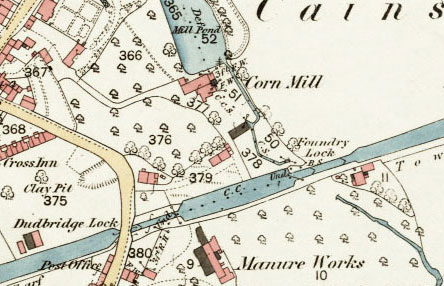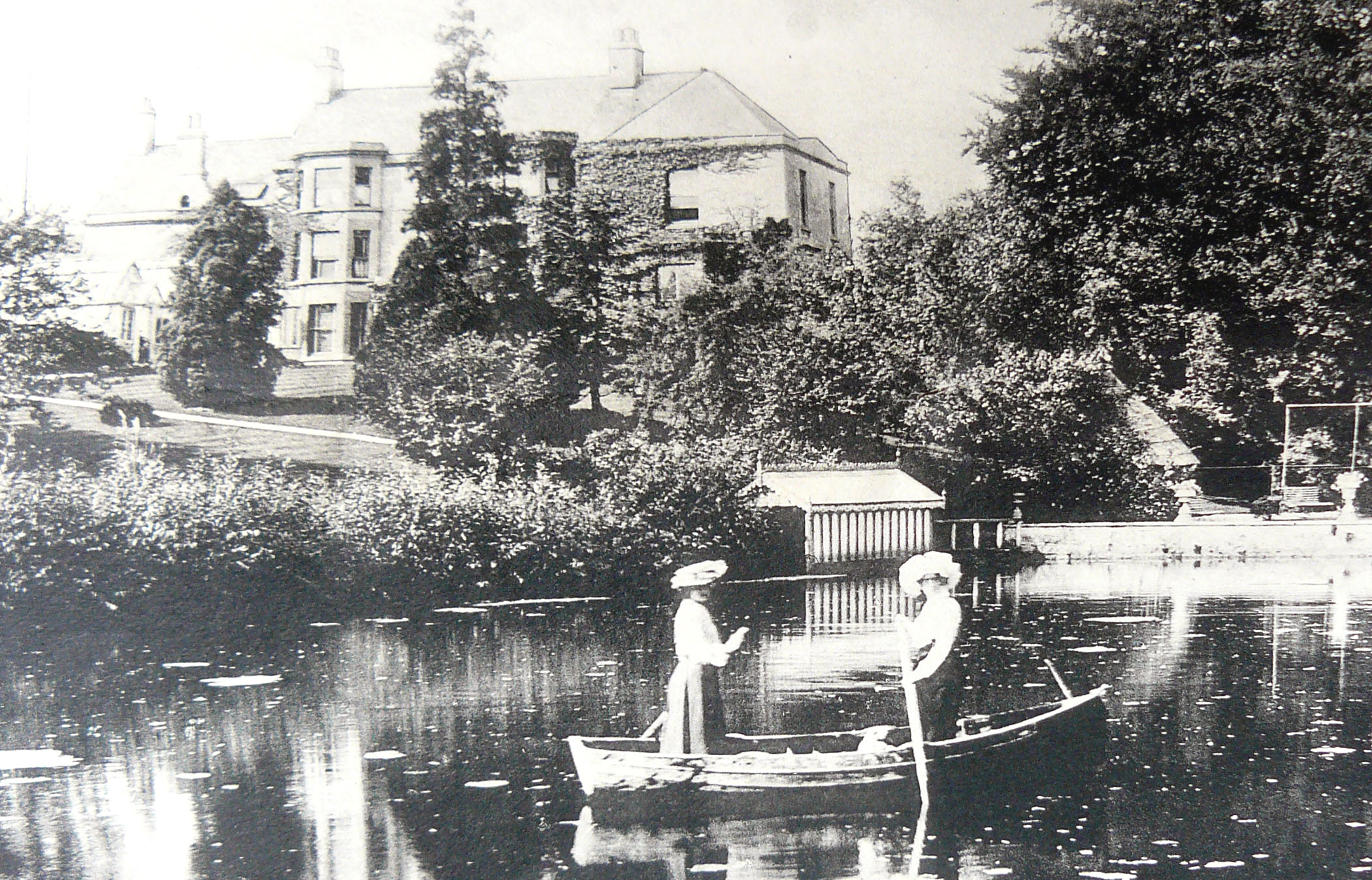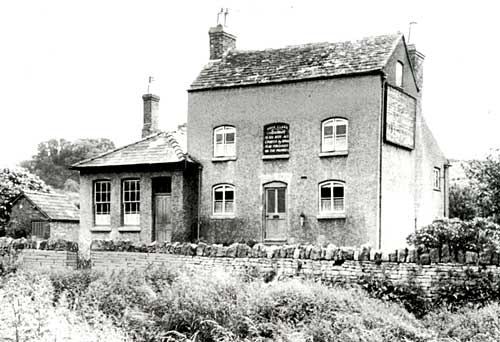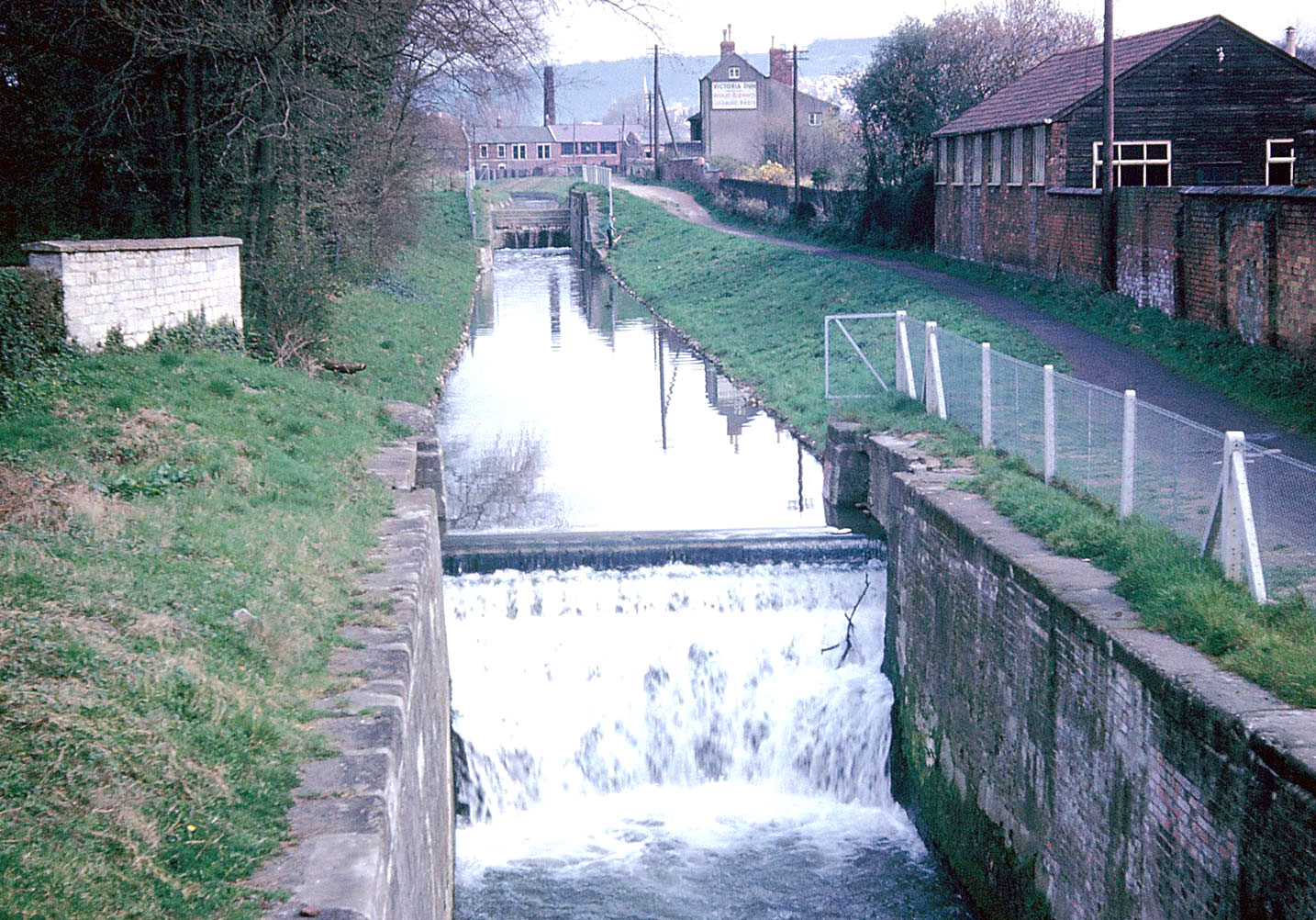

Dudbridge Bridge carried an important road serving the mills and other industries beside the River Frome and along the Nailsworth valley to the south.
The two locks raised the canal to its top pound leading to Wallbridge, Stroud. The upper one was often called Foundry Lock because there was once a foundry nearby. To the north of this lock was an important corn mill powered by the Ruscombe Brook.
The two locks were looked after by a lock keeper who lived in one of the cottages near the road to the south of the lower lock. For a heart-warming tale about the widow of a lock keeper, read A Heart-warming Tale.


A walkway over the upper gates of Dudbridge Lower Lock gives access to an attractive area of woodland on the site of a former corn mill.
When the mill closed c1890, the site was cleared and the mill pond became part of the ornamental grounds of a Victorian house called The Lawn.
In due course, the house was demolished to make way for the Cainscross roundabout, and the Stroud Community Land Trust converted the grounds into an attractive haven for wildlife.


Beside Dudbridge Upper Lock once stood the Victoria Tap pub which occupied premises that had formerly been a foundry. The foundry was involved with pioneering work on the development of textile machinery at a time when the wood used in early machines was being replaced by cast iron.
The pub was in a remote location with no road access, but it attracted workers from the nearby gasworks, crewmen from barges on the canal and walkers on the towpath. It was also well known because of the personality of the long-serving landlady Annie Clark. For more about the pub and its attractive landlady, visit Annie Clark at the Victoria Tap Pub.


After the canal closed in 1954, the wooden gates of the two locks collapsed and the channel became a sorry sight – but not for long. After serious flooding of the river Frome at Lodgemore, the Severn River Board set about converting the upper end of the canal into a second river channel to carry the water from the Painswick Brook. The width of the canal was reduced, weirs were built at the locks, and the towpath again became an attractive walk.
The work of volunteers elsewhere on the canal gradually changed official thinking about restoration, and this was acknowledged in 1991 when the County Council completed the present structure of Dudbridge Bridge flying over what was then a small river. This paved the way for rebuilding the locks as part of the Phase 1a restoration project. As the restored canal now carries a significant current, a 900mm pipe was installed to carry most of the flow down the hillside to feed a turbine beside the Lower Lock which has generated electricity since 2015.
Role of foundry from R L Rose in GSIA Newsletter Feb 1970.
Conversion of the canal into a second river channel from file D1180/9/53.
For more about the Hydro-Electric Scheme, visit Hydro Scheme.